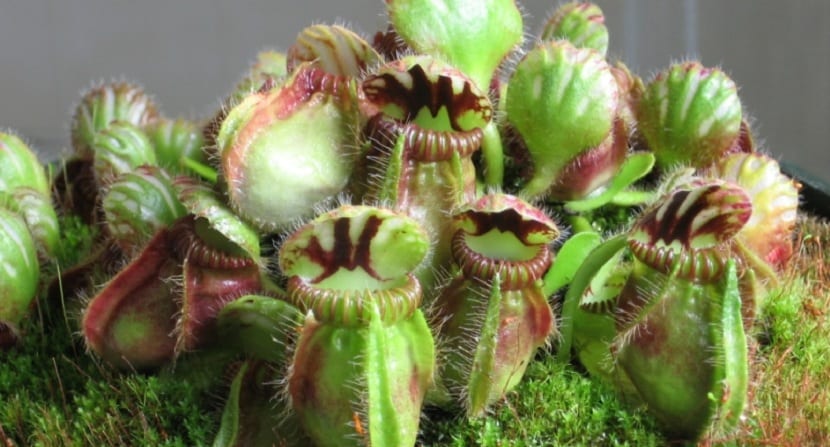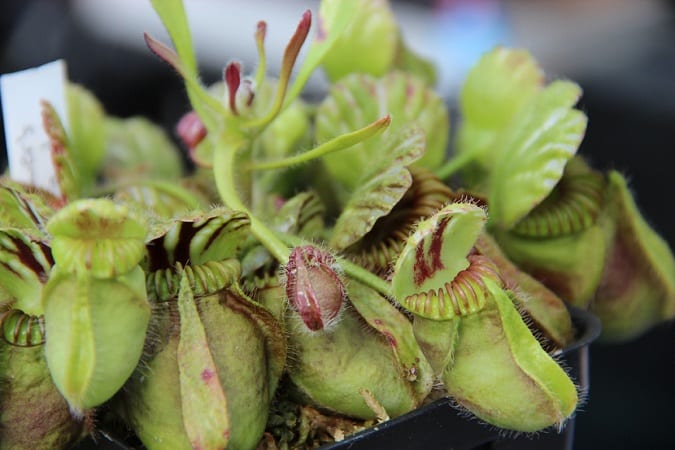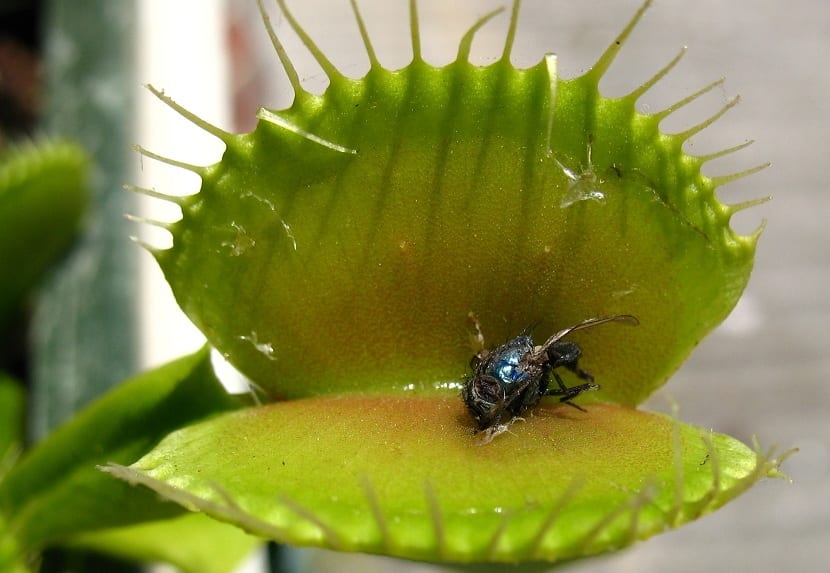
Carnivorous plants They are very famous for their main characteristic: they eat meat. They are plants that almost everyone wants to see sometime in their life, since it is not normal for a plant to feed on something other than water.
But of course, at some point, the evolution and development of living beings created that need to eat meat. How did carnivorous plants acquire their taste for meat?
The dwarf jug
The dwarf jug is a carnivorous plant. It grows in South Australia. This plant has a very peculiar way of feeding. Thanks to the sweet aroma of its nectar, it attracts insects. Once the insect lands on it, it uses the particular vase shape of its leaves to trap them. The insects try to escape again and again, but their possibilities are diminished since, in addition, the digestive enzymes of the plant vstill decomposing the animal and weakening it. These digestive enzymes convert the animal into the essential nutrients that the plant needs to feed itself.
This way of eating is super curious and different from other plants. But at what point did they develop their taste for meat? There are studies thanks to the sequencing of its genome that allows us to discover how this and other species of carnivorous plants they developed a taste for meat.

The dwarf jug has its scientific name known as Cephalotus follicularis and it seems that Charles Darwin he did not discover it on his expeditions. Darwin traveled to the same area of Australia where this plant grows and yet he did not see it, since, in his work on insectivorous plants, he did not mention this species. That is not to say that Darwin did not meet carnivorous plants. In fact, it does describe many other plants with this peculiar characteristic.
Nutrients needed for these plants
At that time, Darwin already attributed this radical strange and unique diet of these vegetables to a strategy to survive in the most hostile environments. He also came to postulate the fact that these plants obtain more nutrients and more frequently from the meat of animals rather than from the soil through their roots.
We have to bear in mind that these plants, despite feeding on meat, can also do so in the traditional way. Insectivorous plants on three continents have traveled the same evolutionary path. The essential nutrients they need to survive and what they especially get they are nitrogen and phosphorus. This is the response that typical plants from very poor soils have. That is, those plants that focus on absorbing nitrogen and phosphorus mainly, tend to live in low nitrogen and poor soil.
The plant has the peculiarity that while part of its leaves are flat and have the traditional mission of photosynthesis, others are molded to form the jug that attracts, traps, digests and absorbs insects. This duality has made it possible to compare the expression of genes in some leaves and in others.
How they acquired a taste for meat
Various investigations have been carried out to explain this fact. It has been found in research published in Nature Ecology & Evolution The reason for this. It seems that a group of proteins that, originally intervened in the defense system of the dwarf jug against pathogens or to deal with plant stress, are now dedicated to producing digestive enzymes.
One of the basic enzymes that works in this type of digestive function is chitinase. This enzyme is responsible for breaking down the chitin of the exoskeleton of insects. Another enzyme that helps you assimilate the phosphorus that robs your victims is phosphatase. As I have mentioned before, this is a response mode of those plants that are able to survive in nutrient-poor soils. Over time, these plants have developed a mechanism to obtain nitrogen and phosphorus from insects, since in poor soils they could not survive well.
